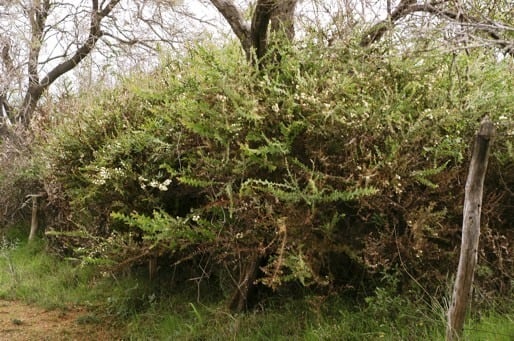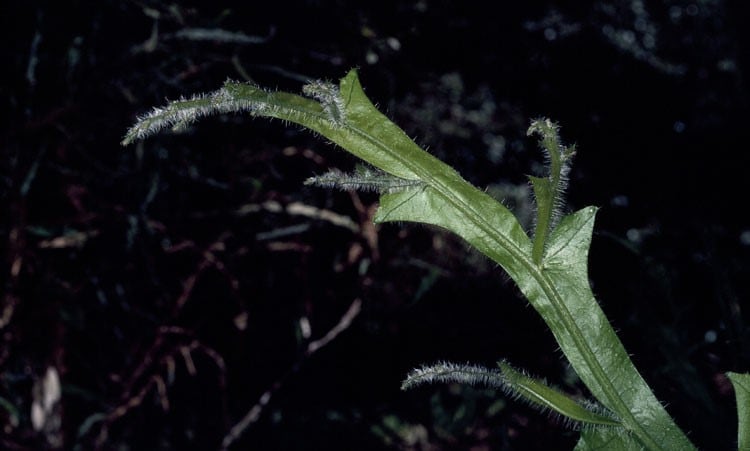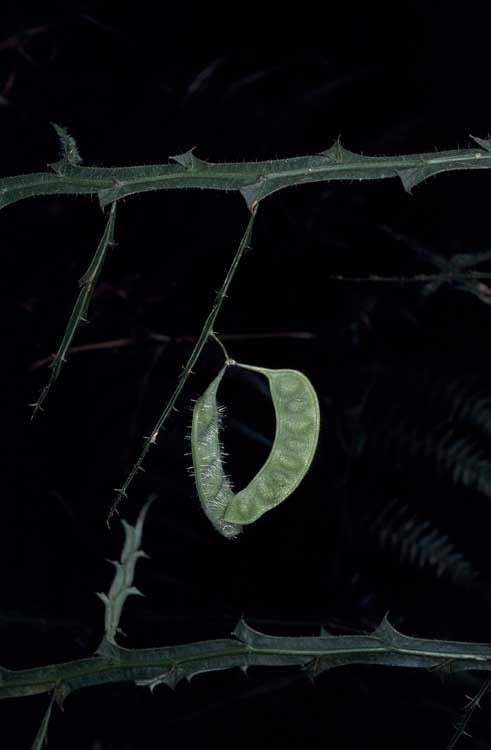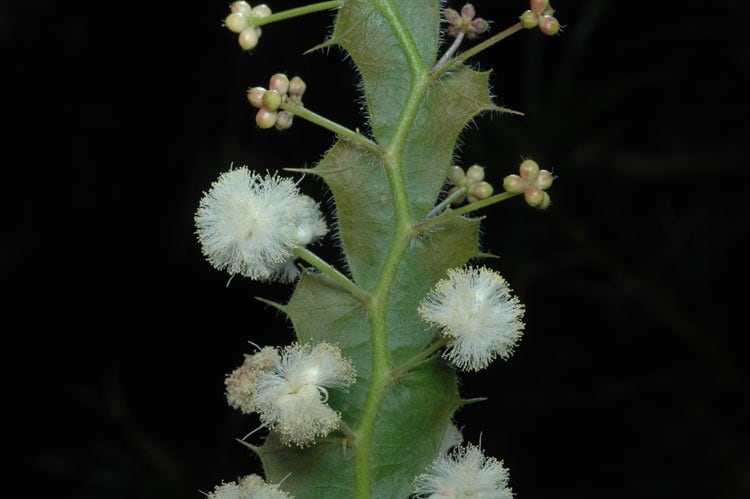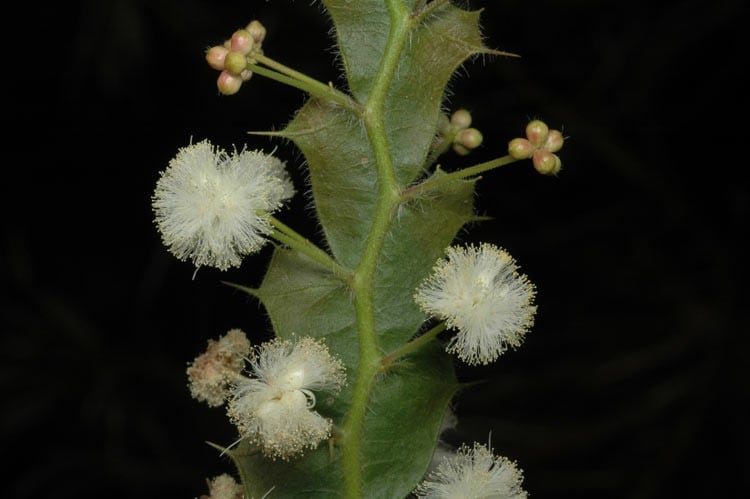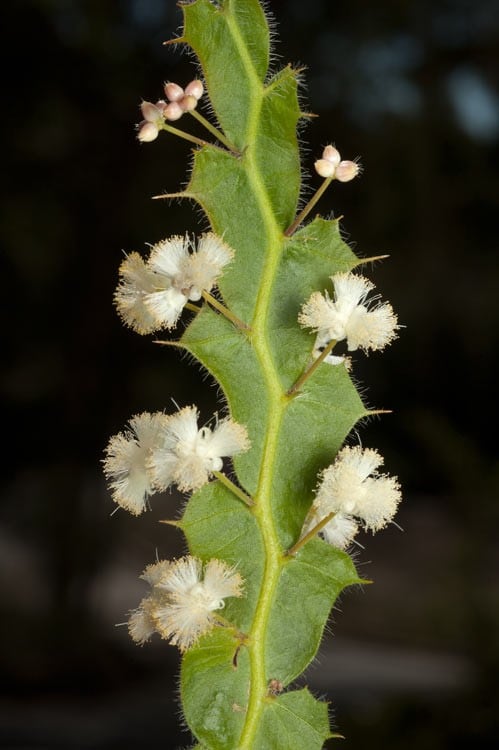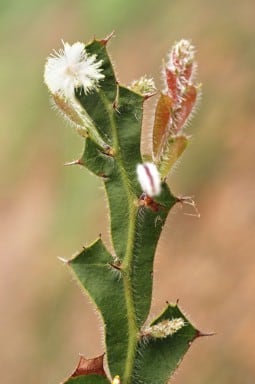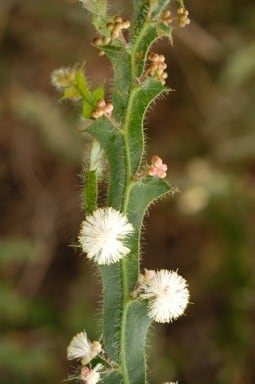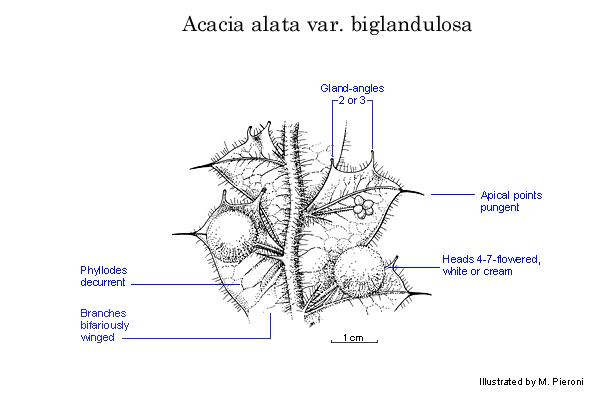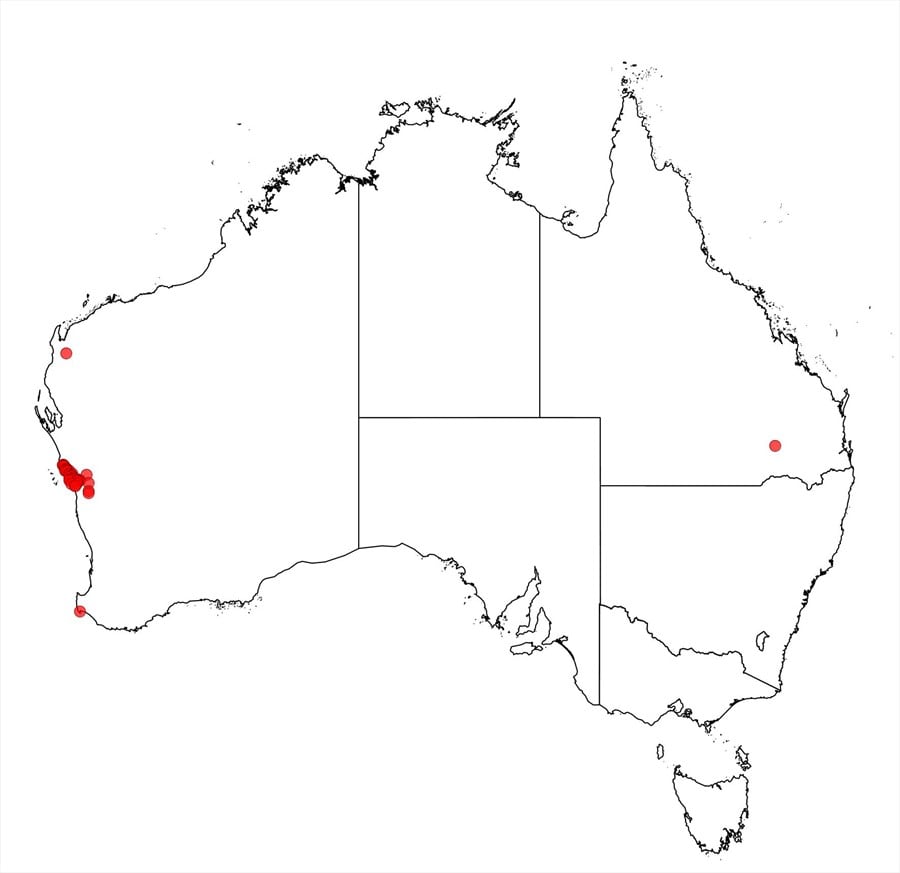Acacia alata var. biglandulosa Benth.
WATTLE
Acacias of Australia
Family
Fabaceae
Distribution
Occurs from Port Gregory S to Mt Michael (c. 35 km SE of Geraldton), W.A.
Description
Shrub 0.5–1.5 m high. Free portion of phyllodes to 5–20 mm long, with apex spinose; glands 2 or 3, normally shortly stipitate, sometimes becoming spinose. Peduncles usually hirsutellous; heads 4–7-flowered, cream to white; buds pink.
Habitat
Grows in loam and sand on lateritic and sandstone hills and also in sometimes saline clay, usually in heath.
Specimens
W.A.: near Nanson on Howatharra–Nanson road, A.M.Ashby 3804 (CANB, K, PERTH); 12.3 km N of junction of Yerina Springs road with Port Gregory–Northampton road, R.S.Cowan A845 & R.A.Cowan (CANB, K, MEL, NSW, NY, PERTH, US); E of Geraldton, R.J.Cumming 829 (PERTH).
Notes
The continuous, bifariously decurrent phyllodes that form opposite wings along the branches are superficially similar to those of A. woodmaniorum, however, the two species are not closely related. Acacia woodmaniorum is readily recognized by having 2 or 3 prominent spines and a sessile gland on the free portion of its phyllodes, more flowers per head, free sepals and glabrous pods.
Peduncles are glabrous on specimens from near Port Gregory (including the type), elsewhere they are hirsutellous.
A variant from about 15 km east of Mingenew differs most obviously from var. biglandulosa in having a preponderance of phyllodes with only a single gland and light golden flower-heads (fide B.R.Maslin, Nuytsia 10: 156 (1995), for details).
FOA Reference
Data derived from Flora of Australia Volumes 11A (2001), 11B (2001) and 12 (1998), products of ABRS, ©Commonwealth of Australia
Author
Minor edits by B.R.Maslin
B.R.Maslin
This identification key and fact sheets are available as a mobile application:
URL: https://apps.lucidcentral.org/wattle/
© Copyright 2018. All rights reserved.

